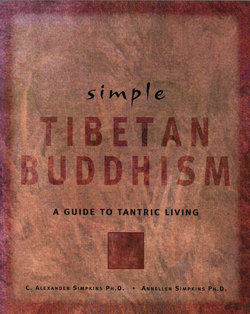Читать книгу Simple Tibetan Buddhism - Annellen Simpkins M. - Страница 12
На сайте Литреса книга снята с продажи.
ОглавлениеCHAPTER 4
Modern Voices
My religion is kindness.
—His Holiness the Dalai Lama
WESTERNERS WHO INTRODUCED TIBETAN BUDDHISM
One of the first Westerners to visit Tibet and give first-hand accounts of what he experienced was Englishman L. Austine Waddell. He became interested in studying Buddhism, which he considered one of the great living religions of the world in 1879. During his work for the Indian Medical Service, he was stationed in India, where he was able to delve deeper into his studies. He was involved in some excavations that revealed actual relics of the Buddha himself, convincing Waddell that Buddha was a real historical person. By chance he was sent to Tibet, to Dorjeling, and seized this opportunity to delve into the little known Buddhism of Tibet, then known as Lamaism. He learned the language and conversed directly with lamas and natives.
His book, The Buddhism of Tibet or Lamaism, was the product of these years of study. Published in 1894, this book portrayed Tibetan Buddhism as a mysterious and magical religion that he found to be strange and often bizarre. The book is filled with detailed descriptions of what he saw and experienced, but because he had no precedence to follow, his understandings were often limited and tinged with prejudice. However, he did do a great service in bringing this tradition to the attention of the West.
Walter Y. Evans-Wentz, (1878-1965) was the American who first popularized Tibetan Buddhism in the West by his translations with extensive commentaries on four major Tibetan texts. His most well known is the Tibetan Book of the Dead.
Evans-Wentz had a spiritual nature from childhood. He attended Stanford University and then Jesus College in Oxford, England. Continually in search of deeper insights, he traveled extensively in Europe and India. He eventually found his way to Tibet where he was attracted to the deeply spiritual atmosphere. He studied with the Tibetan lama Kazi Dawa-Samdup who was headmaster of a school and an official interpreter for India. Evans-Wentz learned some of the Tibetan language as well as Sanskrit. He collaborated with Lama Samdup and continued the work after the lama died, to become one of the first English-language translators (lotsavas, as translators of sacred texts are called in Tibet). He returned to the United States to live at the Keystone Hotel in San Diego, California, so he could be close to the main branch of the San Diego public library. He spent many years there working on his research and translations.
Evans-Wentz had always wanted to open a spiritual center. He almost purchased property to do so in India, but was prevented by the outbreak of World War II. Piece by piece, he purchased Mount Tecate, known to the Native Americans as Sacred Mountain Cuchama located on the Mexican border in San Diego County. He believed that mountains symbolized the quest for enlightenment. He said, “There is more to climbing a ‘celestial’ mountain than conquering perpendicular footage. Upon returning, men report having found a true peace of mind on Sacred High Places, sometimes akin to that of a spiritual initiation (Evans-Wentz 1981, xi).”
